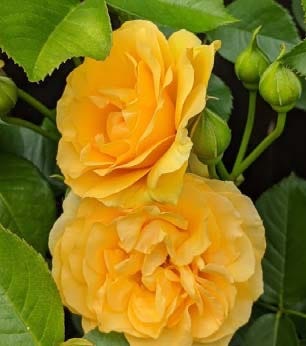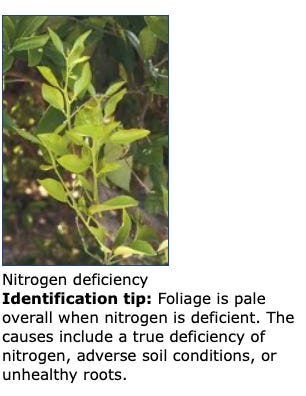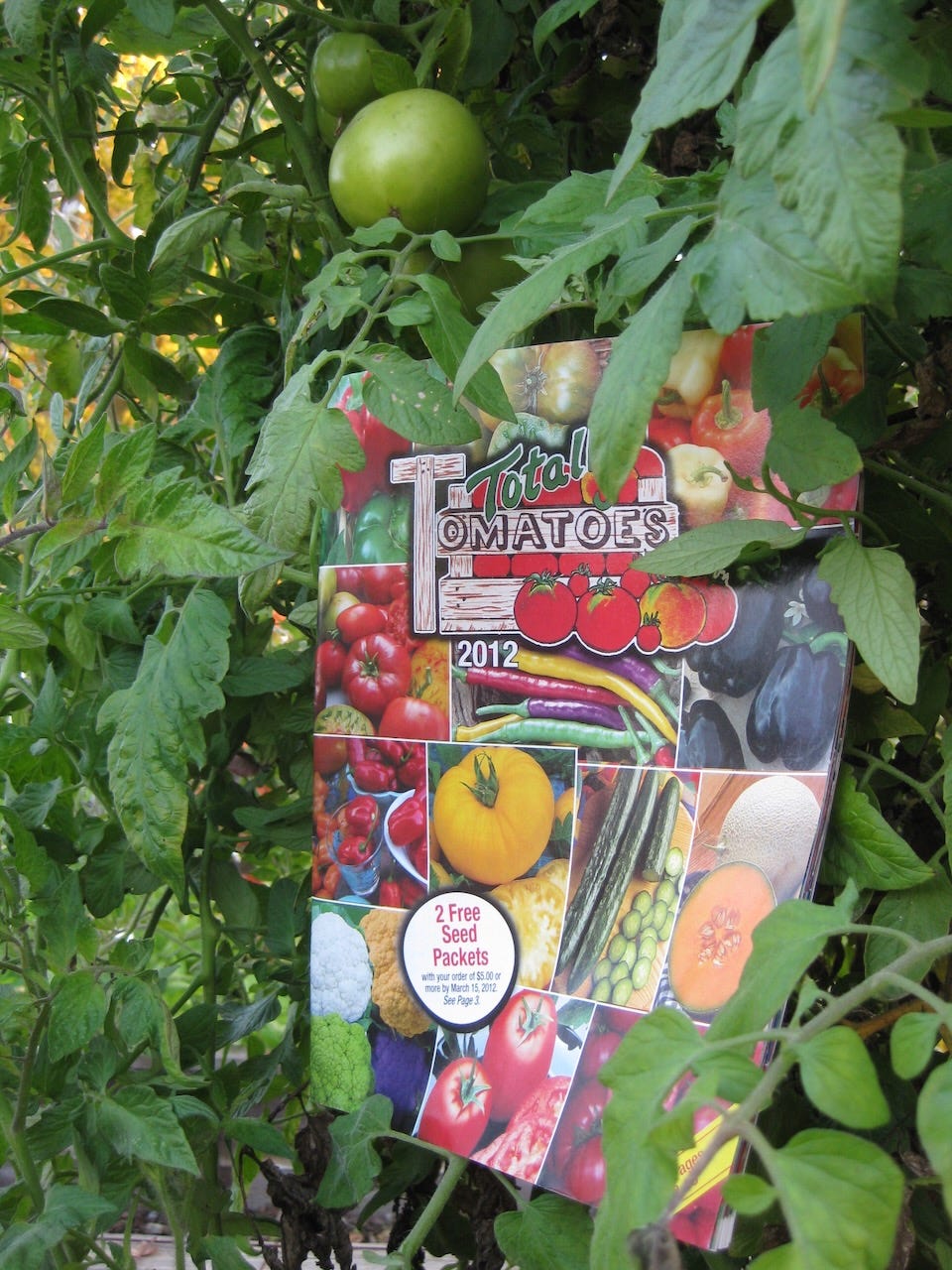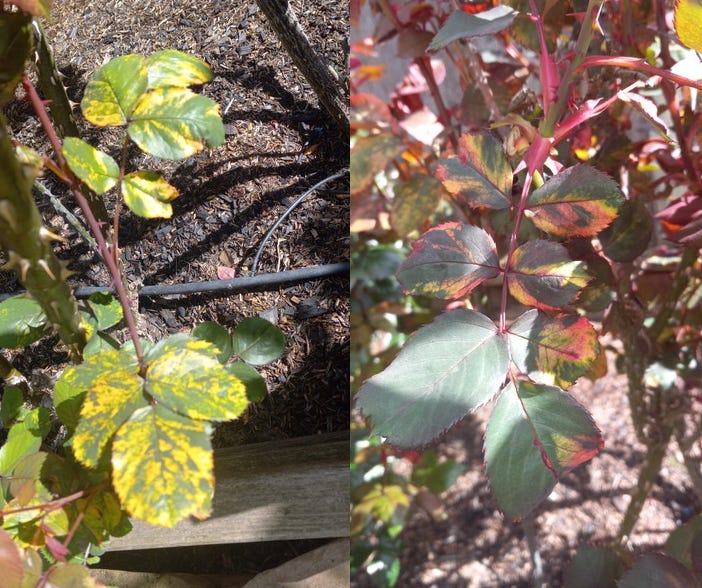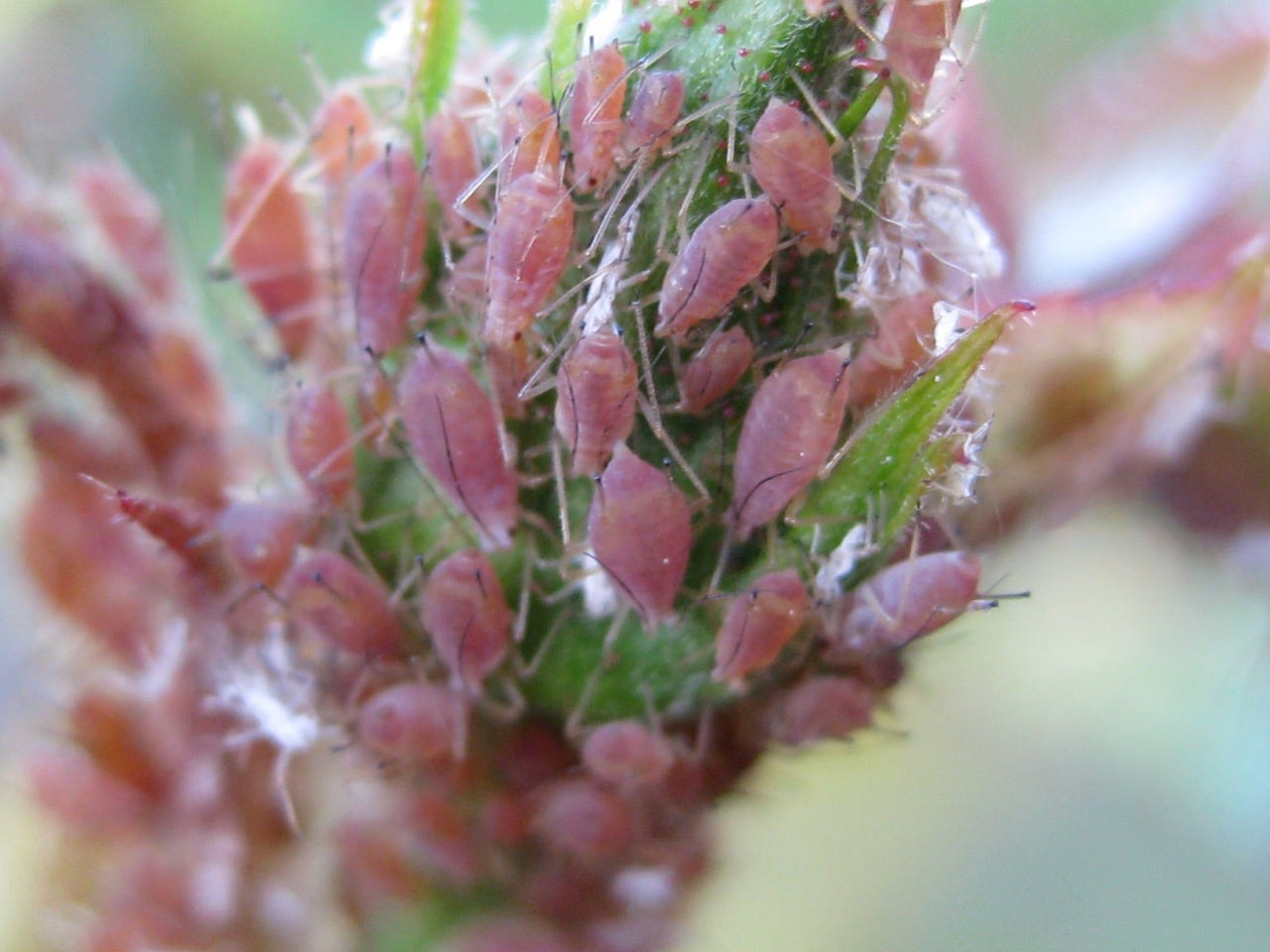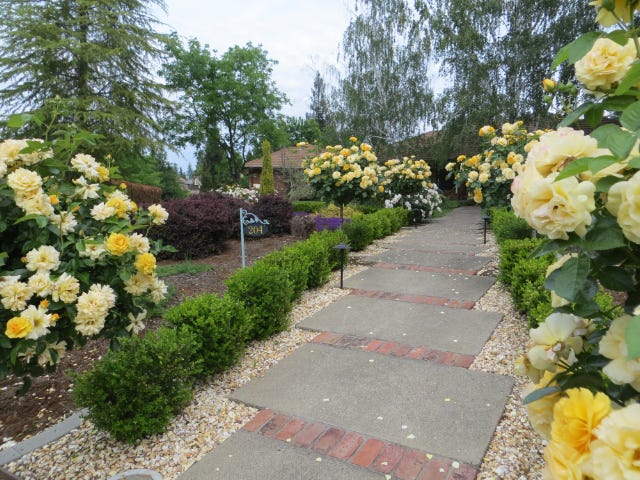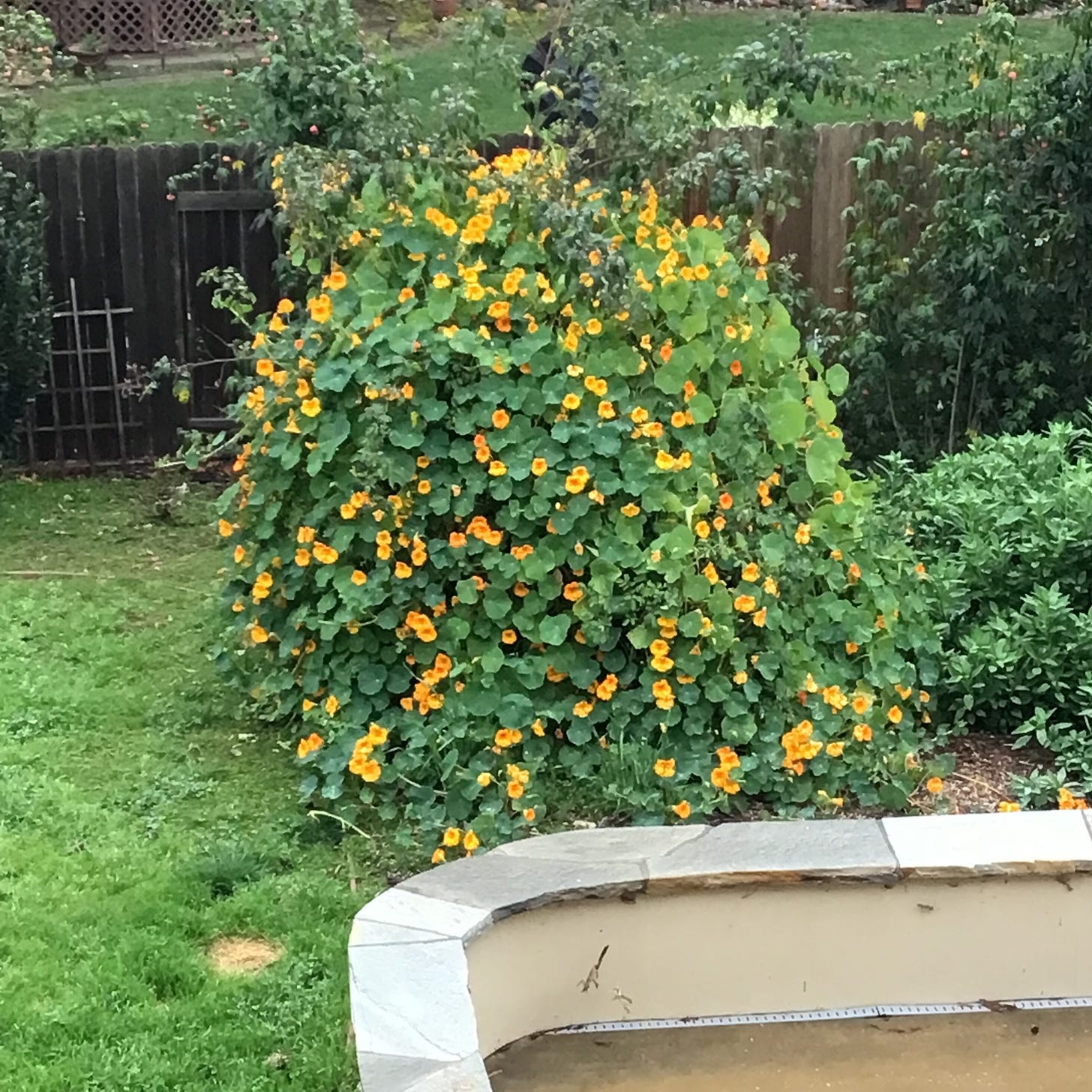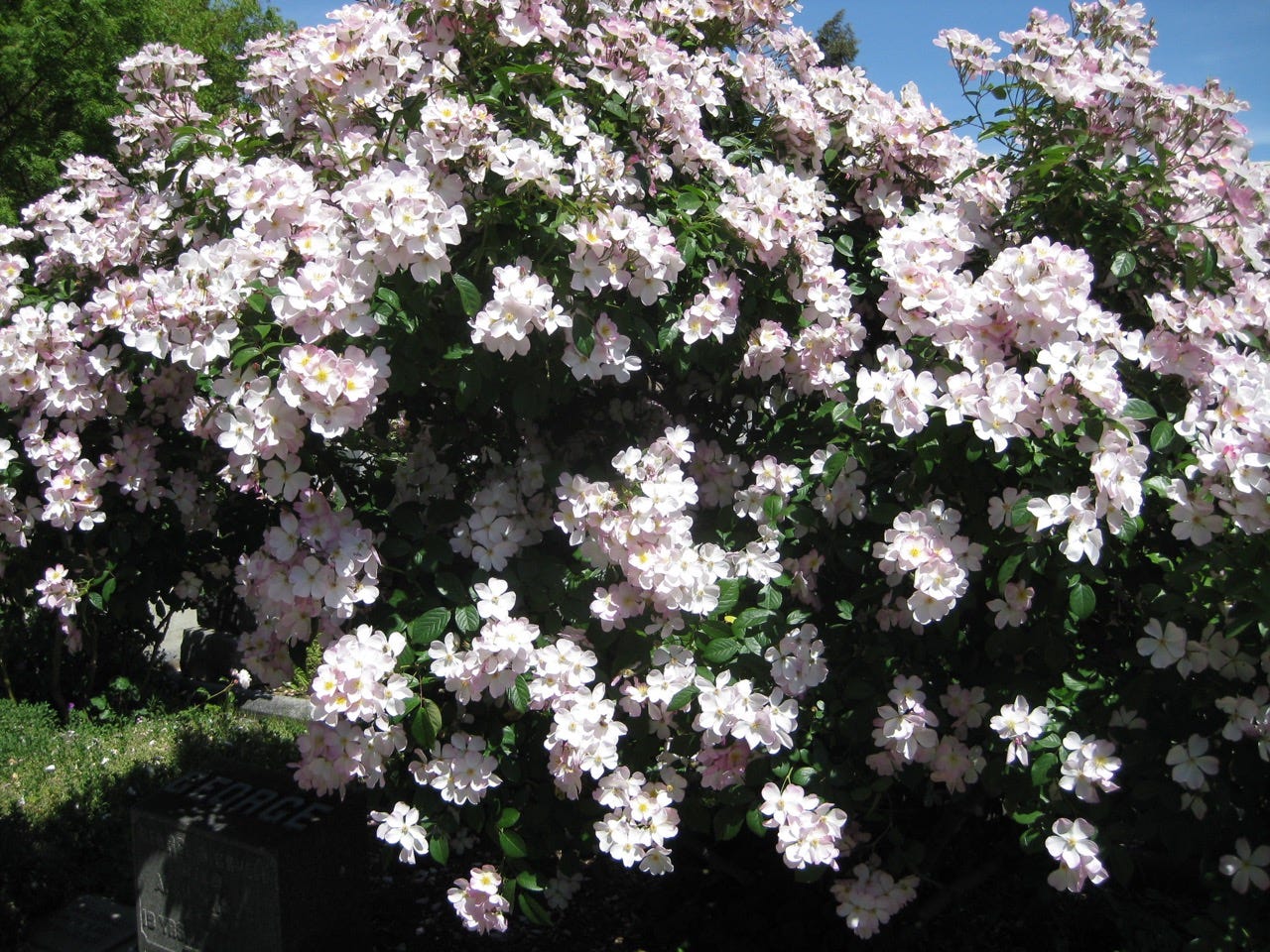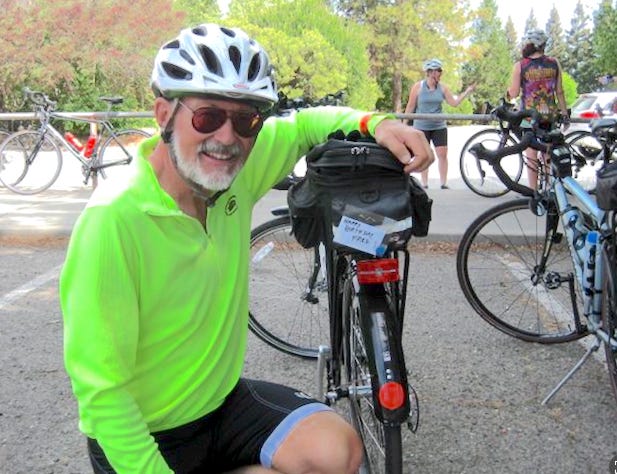We received a lot of good advice on getting your roses off to a good blooming start in 2024 from Master Rosarian Charlotte Owendyk of the Sierra Foothills Rose Society, in the latest episode, #321, of the Garden Basics with Farmer Fred podcast. Charlotte offers up tips on how to recognize the rose diseases and pests of spring, as well as mentioning one of her favorite roses, the Julia Child. And I was confounded by a rose situation in my yard: the Lyda Rose, enveloped by a climbing, colorful nasturtium. The bigger problem, from a listener’s perspective: what do these rose problems look like? Does the Julia Child rose bloom really resemble the color of butter? And, what about that wrestling match between Luscious Lyda and the Nefarious Nasturtium? What does that look like? And breaking news (to me, anyway): Charlotte says hummingbirds love aphids! She’s right.
Well, that’s the point of this edition of the Beyond the Garden Basics Newsletter. To show you what we couldn’t show you on the podcast (yeah, I am familiar with You Tube podcasts…but, no thanks). But before we offer up our version of Every Picture Tells a Story Don’t It, let’s recap this week on the Garden Basics podcast.
We’ve told you already about Friday’s rosy show. Back on Tuesday, the Q&A edition of the podcast (Episode 320) had answers to such questions as:
Why do I have so many yellowing leaves on my citrus trees?
How can I keep cats out of my raised garden beds?
What are some good tomato seed catalogs?
And since this is the picture book edition of the podcast, some partial answers:
2
3
You’ll have to listen to the podcast for more details.
Spring Rose Care, Picture Book Edition
In Ep. 321 of the Garden Basics podcast, Spring Rose Care Basics, I mentioned several times about including pictures about the rose issues we were talking about with Master Rosarian Charlotte Owendyk.
Included were promises of what the rose mosaic virus disease looks like:
What aphids look like on a rose in spring:
Maybe a picture of one of Charlotte’s favorite rose varieties, the Julia Child:
What a Lyda Rose covered in a wild, vining nasturtium plant looks like right now:
And maybe a picture of what that Lyda Rose looks like when it’s not covered in a blooming nasturtium.
Charlotte also mentioned that hummingbirds enjoy aphids, which was news to me! It’s true. Here’s how to attract more hummingbirds to your garden:
The photographer of this picture, Kathy Keatley Garvey of UCANR, points out in this post, “What You May Not Know About Hummingbirds” that, “The hummingbird menu includes such insects as ants, aphids, fruit flies, gnats, weevils, beetles, mites and mosquitoes. They also raid spider webs to grab a quick spider meal and any hapless insects trapped there.”
EXTRA SPECIAL BONUS! Charlotte’s Tips for Propagating a Rose Plant
Best time of year to take rose cuttings for propagating is in the spring—April, May and June. Fall is a close second.
1. Water the rose plant the day before you take cuttings—so the cutting is fully hydrated.
2. Use a 5 gallon pot and fill it 1⁄2 full with a mixture of 60% peat moss and 40% perlite.
3. Select a healthy plant to take the cuttings. Avoid leaves with diseases and insects! Looking at the plant, pick the best part of the plant. Choose a stem that is vigorous and healthy and is on a healthy and vigorous cane. For softer growers— those with more pith (white inner portion of stem) use older part of cane since this type of stem has a greater possibility of rotting.
4. Select a stem where the rose has just cracked open to just fully open. At this stage, the buds along that stem will produce roots; increasing your success rate. Once the rose is spent, the plant is now telling the buds along the stem to begin producing a new flower.
5. Cut just below the eye (bud) since this is the most active growing part of the plant.
6. Essentially the cutting only need two buds, one above the soil and one below. However, many prefer to use a three node cutting. Remove bottom leaf, since this node will inserted in the growing medium. The remaining one or two leaves will continue to manufacture food for the cutting.
7. Wash cutting with 1% bleach (one part bleach to 4 parts water). Use gloves! Wrap cuttings in a wet paper towel for 24 hours and place in a cooler. Cooler temperatures stimulate the formation of roots.
8. Dip the bottom stem in rooting hormone, use a powder not liquid. (Indolebutyric Acid is the leading plant hormone used to promote the formation of roots in plants and to generate new roots in the cloning of plants through cuttings).
9. Plant at an angle up to the bottom leaf, but make sure that the leaf doesn’t touch the medium. Do not crowd the cuttings (Don’t forget to label your cuttings!)
10. Cover the pot with plastic and punch 3-4 holes for ventilation.
11. Place pot on the east side of the house. Check once a week to make sure that it is damp enough. If you have a heating mat use it since it accelerates the process.
12. Pull off plastic in 28 days. Water with diluted liquid fertilizer; acclimate new plants.
13. Cut back the little rose plant several times to build up roots. When they look sturdier, transfer to separate pots. This process takes several weeks.
Thanks, Charlotte.
===========
On a musical note, the above reference and link to Rod Stewart’s third solo album - a classic, by the way - includes his version of the Tim Hardin gem, “Reason to Believe”. Rod did something that very few artists can do: take someone else’s song and make it their own. His interpretation of that song’s sad sad lyrics, I think, really captures the right mood for that song. That song occupies a permanent spot in the earworm cavity in my brain. So, I did what anyone with a disc jockey soul would do: compile as many versions of “Reason to Believe” as I could find (23) into a Spotify playlist.
Thank you for also listening to the Garden Basics with Farmer Fred podcast! It’s available wherever you get your podcasts. Please share it with your garden friends.
Fred Hoffman is also a University of California Cooperative Extension Master Gardener in Sacramento County. And he likes to ride his bike(s).



